Battle Of The Vanguard Titans
I started investing in mutual funds in 1997 as mentioned in my journey post. At the time, there were way fewer funds out there and I didn’t have enough initial deposit to open many of them. Fidelity’s Magellan Fund was a juggernaut, the largest in the world and everyone wanted in it. I didn’t have enough to meet the initial deposit requirement.
But I did have enough for the Vanguard S&P 500 Index Fund (VFIAX) and it was the second or third largest fund and growing fast. It was also the first ever mutual fund for individual investors, started way back in 1976! It had some fame. I dug this history piece up from 1999 when the S&P Index Fund was closing in on Magellan.
 I was still an investing noob at the time but learning fast by reading everything I could get my hands on. But as a noob, you tend to gravitate towards what others are doing. And if I couldn’t get in the Magellan fund, then VFIAX seemed the next best “go with the popular folks” option.
I was still an investing noob at the time but learning fast by reading everything I could get my hands on. But as a noob, you tend to gravitate towards what others are doing. And if I couldn’t get in the Magellan fund, then VFIAX seemed the next best “go with the popular folks” option.
It wasn’t just because it was popular, it was also performing well and I realized that as an index fund the fees were way lower. So that’s the horse I jumped on. And I’m still there today.
Seriously AF? You’re not in The Vanguard Total Stock Market Index Fund (VTSAX)!? You claim that Jim Collin’s book is the bible of simple investing and you’re not even invested in the very fund that he recommends?
Doh…
Well, VTSAX did exist at the time, it was started in 1992. But VFIAX (S&P 500) was older and more established and the one that was written about, talked about, and mentioned in virtually every investing publication. I was getting Money magazine and Investors Business Daily at the time and it was clear that VFIAX was the workhorse for my financial future.
By the time index fund investing came to the forefront in the 2000’s and Warren Buffet was even recommending it, I realized that it might have been better to be in VTSAX.
What are the differences between the two you ask?
Apples To Apples?
VTSAX is the whole market, every stock. While VFIAX is based on the Standard & Poor’s 500 large companies with market capitalizations of at least $6.1 billion. So it weighs heavily towards large-cap companies and doesn’t have any exposure to small and mid-caps.
But my shares of VFIAX were in a taxable account, and substantial by this time. Moving them over to VTSAX would force me to pay taxes on a butt-load of capital gains. So I did some research and decided to leave them and just keep adding to the investment, which I’m still doing today.
Why did I leave them?
Turns out the two funds have pretty similar performance over time, with one or the other sometimes outperforming for a few years here and there. Let’s break down the numbers with some info from Vanguard.
As you can see the numbers are pretty close. The expense ratio is the same (very low) and although VFIAX has performed slightly better over the past 5 years, VTSAX has done better since inception.
Vanguard puts them in the same “Risk Potential” category, but they are different. Since VTSAX is the entire stock market, it includes mid, small, and even micro-cap stocks which makes it more diversified but also introduces more risk and volatility. But the difference is not enough to bump it into the next category based on Vanguard’s scoring criteria. Their category #4 is labeled “Moderate to Aggressive Funds” and is the 4th riskiest out of 5 categories.
Exposure
As I learned more and became more obsessed with diversification, I thought it’d be wise to get some of the exposure to mid and small caps that VTSAX has, but VFIAX does not. So I bought both the Vanguard Small and Mid Cap Index funds as well around 8 years ago.
Now all I do to mimic VTSAX is keep the same percentages of my money in the small and mid cap funds as VTSAX has, and let my VFIAX represent the large caps. So what’s the breakdown on market cap percentages for VTSAX? This is from Morningstar:

For a simple 3-tiered categorization process, I combine “giant” and “large” to mean large-cap because ya know, synonyms. So that’s about 71.5%.
Mid-Caps are 19.17%. And “small” and “micro” combine to represent small cap at around 9%.
At the end of every year, I check the balance of my three funds – the S&P 500 fund (large cap), the Mid Cap Index, and the Small Cap Index. If the balances are off, I make my next contributions accordingly to get them as close as possible to the above numbers that VTSAX has.
That’s my simple way of mimicking VTSAX without actually having VTSAX. Remember I said a while back that I’m a lazy investor.

The only small problem with this approach is that both the Small Cap and Mid Cap Index Funds have a slightly higher expense ratio of .06% instead of the rock-bottom .04% of VTSAX. I’m not too bothered by this as it’s a small difference and both fees are so low as compared to the industry it’s still a bargain.
As you can see, the performance of VTSAX and VFIAX have been very close for a long time, so I’m not even sure if my strategy of mimicking VTSAX by using the small and mid cap funds is necessary.
But who knows, there may well come a time in the future when small or mid caps go on a huge tear as compared to the market in general, and if that’s the case VTSAX will start outperforming VFIAX. My strategy will assure that I get the benefits and gains of that situation if it happens.
Your turn – Anyone else out there have VFIAX instead of VTSAX?
* For the sake of history and accuracy, there can be some confusion about the ticker symbols and when the funds started. Here’s the facts. The S&P 500 Index Fund started in 1976 as ticker symbol VFINX. The Total Stock Market Index Fund started in 1992 as ticker symbol VTSMX.
Then in the year 2000, Vanguard launched “Admiral Share” versions of both. Admiral Shares have lower fees that result from larger accounts, but they also have much larger initial deposit requirements. The Admiral share versions and their associated ticker symbols are what most folks commonly refer to today. They are VFIAX for the S&P 500 Index Fund, and VTSAX for the Total Stock Market Fund.





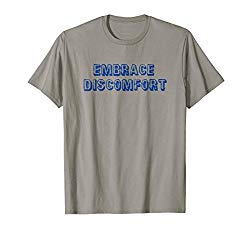



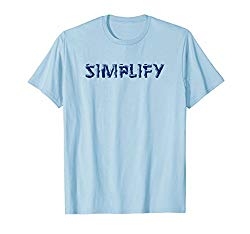
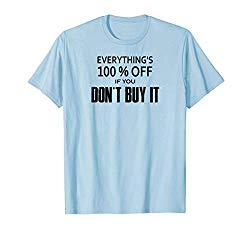

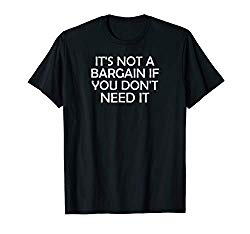


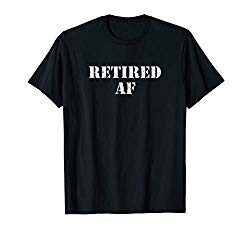
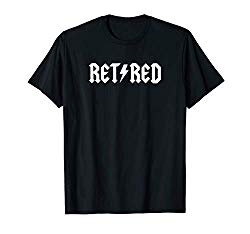



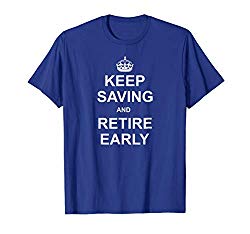
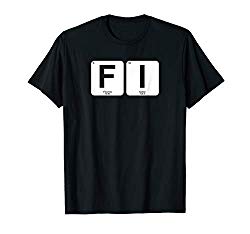
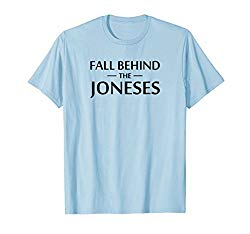








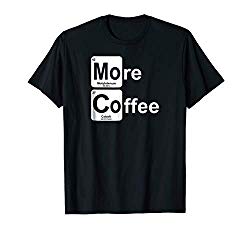










I’m mostly in VTSAX but really look at them as similar. Nice to interchange for capital loss or gain harvesting. Perfect is the enemy of good. If you’re in broad based low cost funds you win. Either way.
Yep, I’m still winning… I’m probably over-analyzing the whole thing but I tend to do that. Thanks for the comment Doc!
I’ve considered VFIAX over VTSAX before diving into the latter. I felt being in the larger boat might be better over time than only focusing on the top performing companies. Collin’s pushed me over the edge toward VTSAX.
That darn Collins… He gave me FOMO. And I promote his book!
Thanks for the comment!
I read JL Collins’ stock series before I seriously started investing (previously I’d just thrown my 401(k) contributions into a targeted fund) so I didn’t even think before I picked VTSAX.
Well actually VTSMX since I don’t yet have $10k in either my brokerage account or the 401(k) I rolled over from my first job. But in a few months I’ll be able to convert the VTSMX in my brokerage account to VTSAX!
Congrats to you, only a few months away! Your discipline is paying off. I saw your tweets, now you just need that raise and it’ll come even faster.
I had VFIAX for a bit but decided I wanted more exposure, so I moved the balance to VTSAX. I didn’t pay any taxes because this was in my tax-advantaged Roth IRA.
They’re nearly identical funds – I believe 75% of the VTSAX is a match to the VFIAX – so that’s why their returns are so highly correlated.
By size it’s probably 75%. Of course total companies it’s 3500+ to 500. If mine were tax protected I’d probably do the same, but I worked around it.
Thanks for the comment Joe!
I do a similar thing with my employer 401k since they don’t offer a total stock market index fund, and instead offer S&P 500, mid cap, and small cap funds.
Great minds think alike!!
VTSAX for me, but I was in elementary school when you first started investing in index funds 😉
Great.. thanks for that. Was it at least 6th grade?
Hahaha. Nope – I was born December ‘87 😉
I also have VFIAX instead of VTSAX. I can’t remember why I originally picked the S&P index over total stock market but I believe Mr. Money Mustache may have recommended VFIAX in an early article (and switched over to recommending the total stock market in later articles). I have also considered whether I should transfer over to VFIAX, and after comparing the two, have come to the same conclusion. That is a good strategy to buy the small and midcap funds. I’m an even lazier investor than you. (:
I think MMM may have reccoed VFIAX early on. As I mentioned, I’m probably just overthinking the whole thing, but I don’t think it’s doing me any harm. I should let lying dogs lie.
Thanks for the comment Lindsay!
Clever idea to just add the mid and small caps so that you can avoid the capital gains. If you really like the diversification, you might consider adding some international as well.
Thanks I’m not called clever much 😉 Jim Collins says that the behemoth US companies have such a large overseas presence that you automatically have plenty of international exposure with them. There’s arguments on that topic. I do, however, have Vanguard Total International as well though but not a huge amount in there.
Thanks Susan!
Definitely a battle of the Titans!
Thankfully these 2 Titans will provide close to the same amount of financial wins for you. You can’t go wrong with either VFIAX or VTSAX. Where most go wrong is simply never investing in either and keeping their money sitting in bank accounts!
Personally Mr. & Mrs. FMM’s Roth IRA’s are both invested 100% in VTSAX. Simple and to the point:)
Yeah, I could have just summarized it by saying “pick either one and you’ll be fine”… but I needed a full post out of it 🙂
I had no idea the S&P 500 mirrored the total stock market so closely has far as returns go. Very interesting. I didn’t get into index fund investing until the last several years, and by then VTSAX was all the rage. Love your backdoor total stock market investing. Great hack. I’m Mr. Collins will be very proud. Cheers.
Thanks Groovy, I’d love for Jim to chime in. As others said, you can’t really go wrong with either one.
I’m impressed you’ve been with Vanguard so long. Nice work around with the mid and small cap indexes. As you say it might not be necessary, but it also could keep you even with VTSAX if it does.
Thanks Amy… maybe I could talk them into letting me be a “real person, not an actor” on a commercial for them. 🙂
I started with VFIAX. And then started investing in VTSAX. So right now I have some money in both. I also have money in VTI and VOO. Hanging on to everything since I have promised myself that I can only buy, and not sell anything until I retire. That is my way of making sure that I will not sell anything when the market crashes, no matter how much I panic 🙂
I sometimes think that the biggest 500 companies are probably the better bet if everything goes bad. The only thing that makes me keep investing in VTSAX (every new investment now goes to VTSAX) is the fact that the number 500 is just arbitrary.
By the time we stop, most of our investments will be in VTSAX.
Yes, those 500 juggernaut companies are the anchor of the US economy. But VTSAX will get you the benefits of the small, innovative disruptors. As others said, the only bad choice between the two is choosing neither.
Is it totally bad I don’t remember exactly which one?! But I’m thinking we have VTSAX, some of these are so confusing and sound next to the same.
Ha, no that’s not bad at all since I think the verdict is that you’re winning with either one. Thanks for stopping by Lily!
My Vanguard Roth IRA that I started in ’99 is 80% VFIAX. I sleep well at night. VFIAX and VTSAX correlate so closely that I have never bothered to transfer to VTSAX. You really can’t go wrong with either choice. Shawn @TheSmartFi
You started last century like I did – congrats!